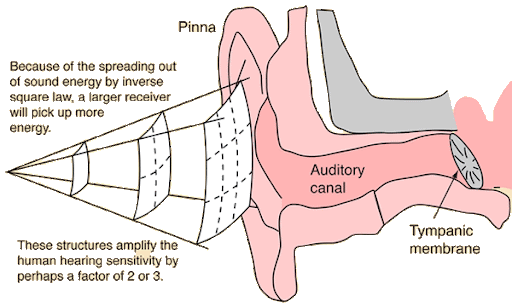The Outer Ear

What is the Outer Ear?
When most people think of their ears, they picture the part you can see — the curves and folds on the side of your head. But your outer ear is more than just cosmetic — it’s the first structure responsible for collecting sound and guiding it toward the more delicate parts inside your ear.
The outer ear is made up of two key parts:

-
Pinna (Auricle): The visible, curved part of your ear. Its unique shape helps catch sound waves from your environment and direct them inward.
-
Ear Canal: A narrow passage that carries those sound waves toward your eardrum.
Together, they act like a natural amplifier, helping your body focus on sounds that matter while filtering out background noise.
What Does the Outer Ear Actually Do?

Your outer ear isn’t just for looks — it plays a crucial role in how you hear and stay aware of your surroundings. It helps to:
-
Collect Sound Waves: The curved shape of your pinna captures sound from different directions.
-
Determine Sound Direction: It helps your brain figure out where sounds are coming from — above, below, behind, or in front.
-
Protect Your Ear: The ear canal produces earwax (cerumen), which traps dust, debris, and bacteria, keeping your inner ear safe.
Without the outer ear working properly, your hearing clarity, balance, and even safety can be affected.
Outer Ear Conditions We See Often
-
Excess Earwax (Cerumen Impaction): Can cause temporary hearing loss or discomfort
-
Outer Ear Infections (Swimmer’s Ear): Often due to moisture trapped in the canal
-
Injuries to the Pinna or Ear Canal: Cuts, trauma, or deformities can affect hearing and appearance
-
Foreign Objects in the Ear: A more common issue than one may assume...

Cerumen (Ear Wax) Impaction
.jpg)
Otitis Externa (Swimmer's Ear)

Auricular Hematoma (Cauliflower Ear)

Foreign Object
(Sand and Stone)
At Clarity Hearing Care, we specialize in diagnosing and treating outer ear issues, from routine wax removal to identifying more complex concerns.
Did you know?
-
Your outer ear never stops growing — that’s why ears tend to look larger as we age.
-
The shape of your outer ear is as unique as a fingerprint — no two are exactly alike.
-
Your outer ear helps you tell if a sound is coming from in front or behind — without it, your brain would struggle to locate sounds.
-
The curves of your ear naturally amplify certain sounds — especially speech frequencies critical for understanding conversations.
-
Your ear canal produces earwax to clean and protect itself — it's your body’s natural defense against dirt and bacteria.
Want to learn even more?
Check out the video below for a deep dive into the anatomy of the Outer Ear!
